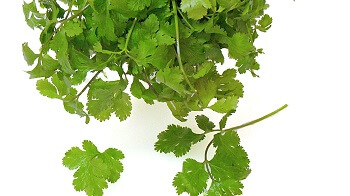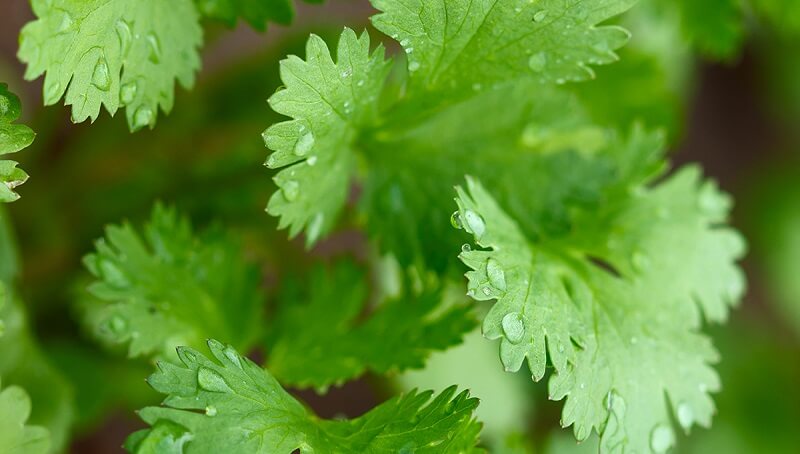You might have stumbled upon recipes that call for a bunch of cilantro, but a lot of people don’t know how much cilantro will fit in a bunch. And truth be told, for someone that isn’t an experienced chef, this information might be hard to find. The term “bunch” means different sizes depending on the store where you are getting your cilantro from, so different people will use different measurements in their recipes. This makes it pretty hard for you to know exactly what a recipe refers to.
To find out exactly what does a bunch of cilantro mean in terms of weight and size, we took things into our own hands and went straight to the closest grocery stores. Some simple measurements made us realize that most grocery stores will have bunches of cilantro with an average weight of 2.8 ounces. This all translates into about 93 springs of cilantro in every bunch.
To move farther with our tests, we used a 2.8-ounce bunch of cilantro, which was the average weight, to figure out the amount of chopped cilantro leaves. What we found out was that from a bunch of cilantro you will usually get 3/4 cups of packed cilantro. A bunch also translates into a cup of chopped cilantro leaves, and the same bunch would mean 1 and 1/2 cups of loose cilantro leaves.
An interesting piece of information is that cilantro isn’t a vegetable on its own. It actually means the leaves from coriander plants, while coriander means the dried seeds of that plant. Cilantro is a plant that comes from the southern part of Europe and the western part of the Mediterranean region, being one of the oldest spices known in history books.
You might also like our articles about the weight and amount of celery, cabbage, or corn.
So by this point, you should know that a bunch of cilantro is around 2.8 ounces of cilantro. You can always use the kitchen scale to measure this plant if you grow it on your own, or you can use the store’s scale when buying it. As you’re already used with us doing on this website, you can always use the premium converter we provide below to know exactly how many chopped cilantro leaves or how many bunches of cilantro you will need for a recipe or another.
General Info on Cilantro
A lot of people know Cilantro as Chinese Parsley or Coriander.
Short Term Storage
You will have to cut off the bottom of the cilantro stems and leave them unwashed. The next step is to fill either a water glass or a jar partially with water and place the stem ends of the plants in the container, in water. Next, you will have to store the cilantro, covered loosely with a plastic bag, inside the refrigerator. Make sure you change the water every few days before it starts to change its color. If you store cilantro properly, it can last for up to 2 weeks or in some cases, even longer.
Long Term Storage
 The easiest way of freezing it is by removing the leaves and discarding the cilantro stems. Some people like to fill every ice cube cavity from an ice tray with cilantro leaves and then put water over them until the cavities are full. You will have to keep it in the freezer for about two days. The next step will then be to just remove the cubes of cilantro and move them into a freezer Ziploc bag. You can store the whole bag in the freezer for up to two months and use parts of the frozen cilantro whenever you need it.
The easiest way of freezing it is by removing the leaves and discarding the cilantro stems. Some people like to fill every ice cube cavity from an ice tray with cilantro leaves and then put water over them until the cavities are full. You will have to keep it in the freezer for about two days. The next step will then be to just remove the cubes of cilantro and move them into a freezer Ziploc bag. You can store the whole bag in the freezer for up to two months and use parts of the frozen cilantro whenever you need it.
Do you need to dry your cilantro? Then bundle it by the stems and tie the bundle altogether with something like a rubber band. The plant pieces will need air circulation, so you can use a brown paper bag, but you should poke holes in it every 2 inches. You will have to put the cilantro inside the bag and tie the bag shut at its end. You will have to place the bag in the basement or another cold place for about a week until all of the leaves will be dry enough to fall from the stems. The dried leaves can then be stored in an air-tight container for the next 6 to 9 months.
Here are some interesting facts about cilantro:
- If you freeze or dry leaves that are cut from their plant, their aroma is almost completely lost. At the same time, fresh leaves won’t have a long shelf life if you cut them from the plant.
- Something most people don’t know is that coriander seeds actually come with less nutritional value than fresh cilantro.
- You can actually prevent food from spoiling if you use cilantro leaves because they are very high in antioxidant properties.
- Some beer companies from Belgium will use orange peel and coriander to add the citrus taste to their beers.
- A lot of people have a hard time actually liking the cilantro taste, so make sure you ask before you make a family dinner with excessive use of this ingredient. For some, the taste is closer to a soap-like experience.
- You will notice coriander and cilantro leaves having a light citrus taste. The seeds have a stronger or more pungent taste and scent.
- Coriander seeds are among the ingredients needed to make curry spice paste and other mixes.
- The root is the tastiest between the parts of the plant, way tastier than seeds, stems, or leaves. Some people throw out the root, but that isn’t a good idea seeing that you can make Thai curry pastes out of it by simply grinding it.
- All of this plant’s parts are edible. Everything from seeds, to roots, stems, and even leaves can be eaten. But most recipes clearly say which part of the plant should go where and you should never replace one with the other in recipes because the tastes differ considerably.
- Middle Eastern, Southeast Asian, Indian, and Mexican cuisines, all use the seeds and other parts of this plant in their recipes. The plant is also heavily used as an ingredient in Scandinavian, African, Chinese, Latin American, Mediterranean, and Central Asian cuisines.
- Cilantro has been used in recipes ever since history started to get recorded, with references in the Bible and other ancient texts from the Roman Empire, Egypt, and even China.
